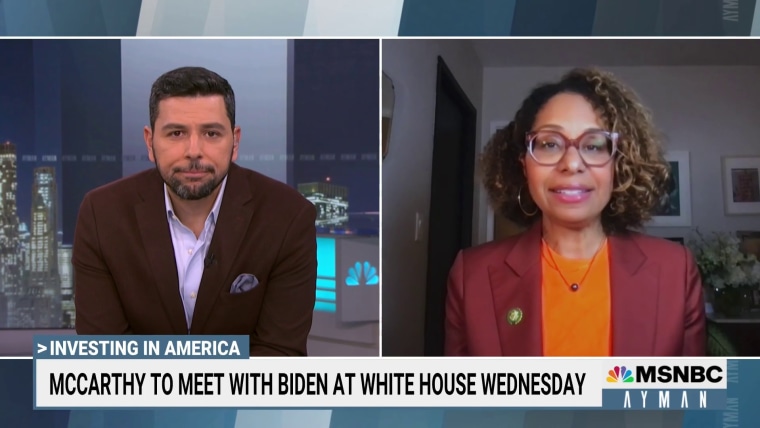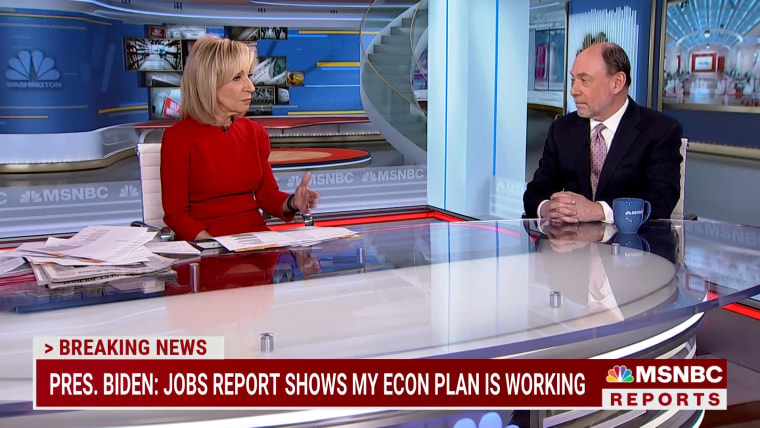The Federal Reserve’s main job is balancing risks. If it keeps interest rates too high, it risks choking off economy-wide spending. When customers dry up, businesses stop hiring and unemployment rises.
If it keeps interest rates too low, then it risks spurring too much spending. When customer demand exceeds the economy’s ability to produce goods and services (even with very low unemployment), the result could be inflation.
Set aside arguments about whether the Fed should have raised rates faster or slower over the past 18 months, including last week's 0.25% increase. What’s clear today is that inflation is decelerating rapidly and that going forward, the more pressing risk is an economic slowdown. For overall income growth, recessions are worse than even periods of high inflation, period. And the damage recessions cause is also highly regressive — hurting the most vulnerable and historically disadvantaged groups the hardest. Given all of this, the Fed should stand pat on rate increases for a while.
For overall income growth, recessions are worse than even periods of high inflation, period.
This judgment is based on three main considerations. First, major potential sources of inflation are cooling. Second, key “shock absorbers” that can muffle surprise inflationary pressure in the next year are already deploying. Third, the Fed has tools to react if inflation resurges in the next year, but it doesn’t have the tools that can help much if unemployment starts rising. Even worse, the institution that does have those tools to help if recession comes — Congress — is a horror show of dysfunction.
Let’s take each of these considerations in turn.
Much of the acceleration in core inflation seen in late 2021 and 2022 was in housing. But industry data show housing cost inflation (both home prices and rental costs) cooling quickly. This will lower inflation sharply this year.

Another source of cooling is nominal wage growth. Wages were not a driver of recent inflation, and have actually dampened inflationary pressure over the past year, but some — like Federal Reserve Chair Jerome Powell — have worried that wages could begin accelerating in response to the higher inflation. But wage growth has clearly decelerated since early 2022, even as unemployment has fallen. Measured year over year, nominal wage growth was 4.4% in January — earlier in 2022 it was nearly 6%. This 4.4% wage growth can be sustained for a long time without pushing inflation over the Fed’s 2% inflation target.
Besides these signs of cooling, key inflation shock absorbers are also going to deploy. One of these is falling profit margins. Over the past 18 months, big increases in profit margins drove lots of inflation. Going forward, this is likely to reverse, and shrinking margins will help absorb wage growth without seeing it translated into higher inflation.
The Fed cannot get involved in partisan political fights, but it certainly can — and must — be realistic about likely economic scenarios.
Another shock absorber is an acceleration of productivity growth. Productivity is a measure of how much output is produced in an average hour of work. Fast productivity growth is strongly anti-inflationary. The intuition is simple — if inflation is too much money chasing too few goods, productivity growth allows more goods to be produced. Productivity data is pretty volatile, but it was actually negative on average between the beginning of 2021 and mid-2022. But the last half of 2022 saw it rebound strongly and averaged well over 2%, close to its historical average. If it can sustain anywhere near this pace (which is close to its historic average), this would be a key inflation shock absorber.
But suppose that, despite all of these influences, we turn out to be wrong about inflation normalizing this year and we instead see resurgent inflation driven by an overheated economy. If that happens, the Fed can still cool the economy by raising interest rates (in fact, we’re worried that previous rate hikes might eventually provide too much cooling — but table that for now). Yet, if this year sees not high inflation, but weak growth and rising unemployment, lowering interest rates won’t work very well to solve those problems. This asymmetry in which rate hikes effectively restrain growth but rate decreases do not spur growth has been analogized to “pushing on a string." Recall, for example, the economic “recovery” from 2009-2016 — the slowest since World War II even though interest rates were stuck at zero.

When the economy is depressed despite interest rates reaching zero, fiscal policy — decisions on taxes and spending made by Congress — needs to be deployed to stimulate spending. When this does not happen, a full recovery to economic health can take far too long. The recovery from the Great Recession of 2008 was hamstrung terribly after 2011 when Republicans used the debt limit as leverage to force spending cuts. The resulting Budget Control Act provided an anti-stimulus drag on recovery that was twice as large as the stimulus provided by the much better-known Recovery Act passed two years earlier.
A scenario in which congressional Republicans use the debt ceiling to enforce austerity sounds queasily familiar. The Fed cannot get involved in partisan political fights, but it certainly can — and must — be realistic about likely economic scenarios. In a more rational Washington, the Fed might able to justify leaning toward interest rate increases as it has in recent months. But in this Washington, the risk of accelerating a recession is too great. The Fed must act accordingly.
